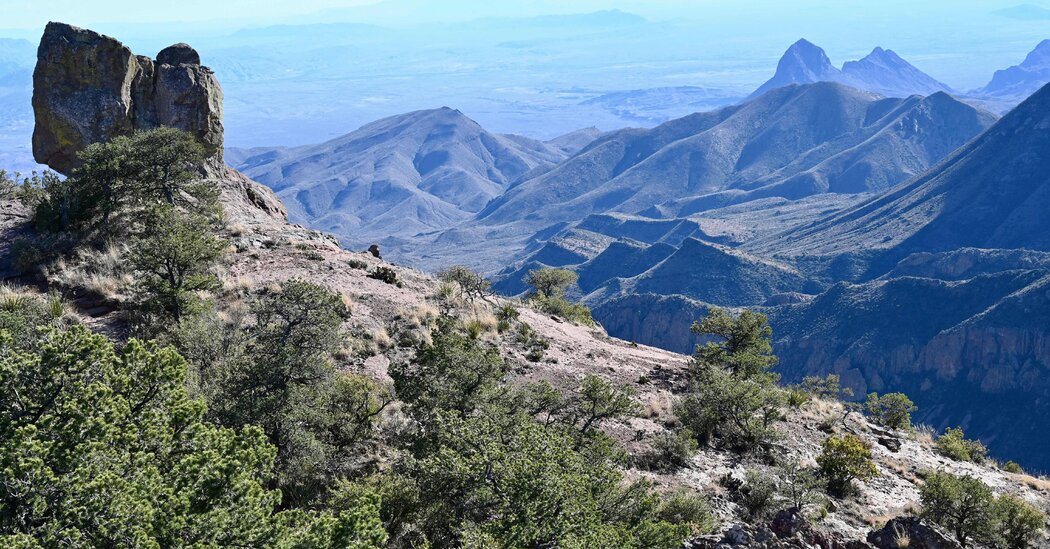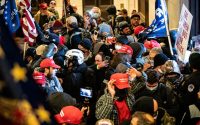Kansas City Grappled With Shootings Long Before the Super Bowl
Across the country, Americans were shocked and horrified by the images on Wednesday from Kansas City, Mo., after shots were fired into a crowd of jubilant parade-goers celebrating the city’s Super Bowl win.
To people intimately aware of the entrenched violence in Kansas City, the shooting was painfully familiar.
There were 182 people killed in Kansas City last year, according to police data, surpassing a previous high in 2020. With a population of just over 500,000, Kansas City has one of the highest murder rates in the nation.
Rosilyn Temple, who founded the Kansas City chapter of Mothers in Charge after her son, Antonio, was killed in 2011, was at the scene of two separate shootings on Tuesday, the night before the Super Bowl celebration.
“It will get some big attention,” Ms. Temple said about the shooting at the rally. But after a year with record homicides in the city, she said, “it was just a matter of time” before there was a shooting that resulted in a large number of injuries or deaths.
City officials and community leaders have fought for years to reduce gun violence. Many of the homicides driving Kansas City’s record highs stem from arguments or other disputes, whether within families, groups of acquaintances or rival gangs, according to city officials and those involved in violence prevention efforts.
Missouri has some of the least restrictive gun ownership laws in the country, and acquiring a handgun or rifle is not a difficult task. No permit is necessary for those 19 and older to carry a concealed handgun.
Police in Kansas City have offered few details about the circumstances surrounding the shooting at the celebration, which left one woman dead and at least 22 people injured. But on Thursday, the city’s police chief, Stacey Graves, said the shooting probably stemmed from an argument and was not being considered an act of terrorism.
A couple who was at the rally said they witnessed the terrifying scene: As they prepared to leave the rally, an altercation broke out near them, and two men began firing at each other, said Kourtney and Jesse King, who live in Independence, Mo., and attended the parade with their children.
“They were running away from each other,” said Mr. King, 41, “but they were still firing weapons behind their backs, just not really aiming.”
On Thursday evening, two people, both under 18, remained in police custody.
Annie Struby, a lawyer and advocate for domestic violence victims in Kansas City, said she had spent the day of the parade holding her breath, worrying that something might happen there.
When she heard news of the shooting, she immediately wondered if it was tied to a conflict that began well before the parade, between people who knew each other.
“It’s so incredibly easy for almost anybody to get a firearm,” Ms. Struby said. “It allows for such an immediate escalation of an incident.”
After a sharp rise during the pandemic, murder rates fell in most cities in the United States in 2023, according to F.B.I. data. Most violent and property crimes are also down.
But Kansas City remains a stubborn outlier. Among 20 U.S. cities with the highest number of homicides in 2022, Kansas City was just one of four, along with Dallas, Memphis, and Washington, that had an increase in killings last year.
“Violence in Kansas City is not new,” said Damon Daniel, the president of the AdHoc Group Against Crime, which provides counseling services to people affected by violence as well as employment readiness training.
Mr. Daniel, who closely monitors police data on homicides, has counted several homicides in the city just since last weekend.
“We are at one of those points where, for many of us, it feels like it is getting worse before it is getting better,” he said. But he added that efforts to increase collaboration between law enforcement, nonprofit organizations and city agencies were beginning to bear fruit. “We didn’t get here overnight, and it won’t go away overnight,” he said.
Mike Parson, the Republican governor of Missouri and a former sheriff, was at the back of the stage, in front of Union Station, when shots were fired. Speaking on the radio on Thursday morning, Mr. Parson acknowledged Kansas City’s issues with violence, but said that other cities were “worse by far.”
Violence in Kansas City is concentrated in certain neighborhoods that are also marked by poverty and blight. A disproportionate number of shootings in the city occur east of Troost Avenue, a major north-south street. Kansas City is somewhat divided both racially and socioeconomically by Troost, a divide that has its roots in redlining and deliberate racial segregation.
On Thursday, Mayor Quinton Lucas, a Democrat who has been mayor since 2019, pushed back on the notion that the parade shooting downtown, or the gun violence prevalent in residential neighborhoods, defined the city.
“I don’t think, in any way, that this is Kansas City,” he said. “I do think there is a gun violence challenge in this community and many others.”
But he added that he did not expect the city to stop hosting parades and other events.
Representative Emanuel Cleaver II of Missouri, a Democrat and former mayor of Kansas City, said the city’s football team had been a source of pride and community for its residents, bringing people together regardless of race or ideological differences.
What he fears, he said, is what violence might do to celebratory, community events across the country. Would concerns for safety begin to keep people away?
“It begins to tear apart our togetherness that sports can do, and the Chiefs in particular right now,” he said.
Reporting was contributed by Jacey Fortin, Robert Gebeloff and Colbi Edmonds.


